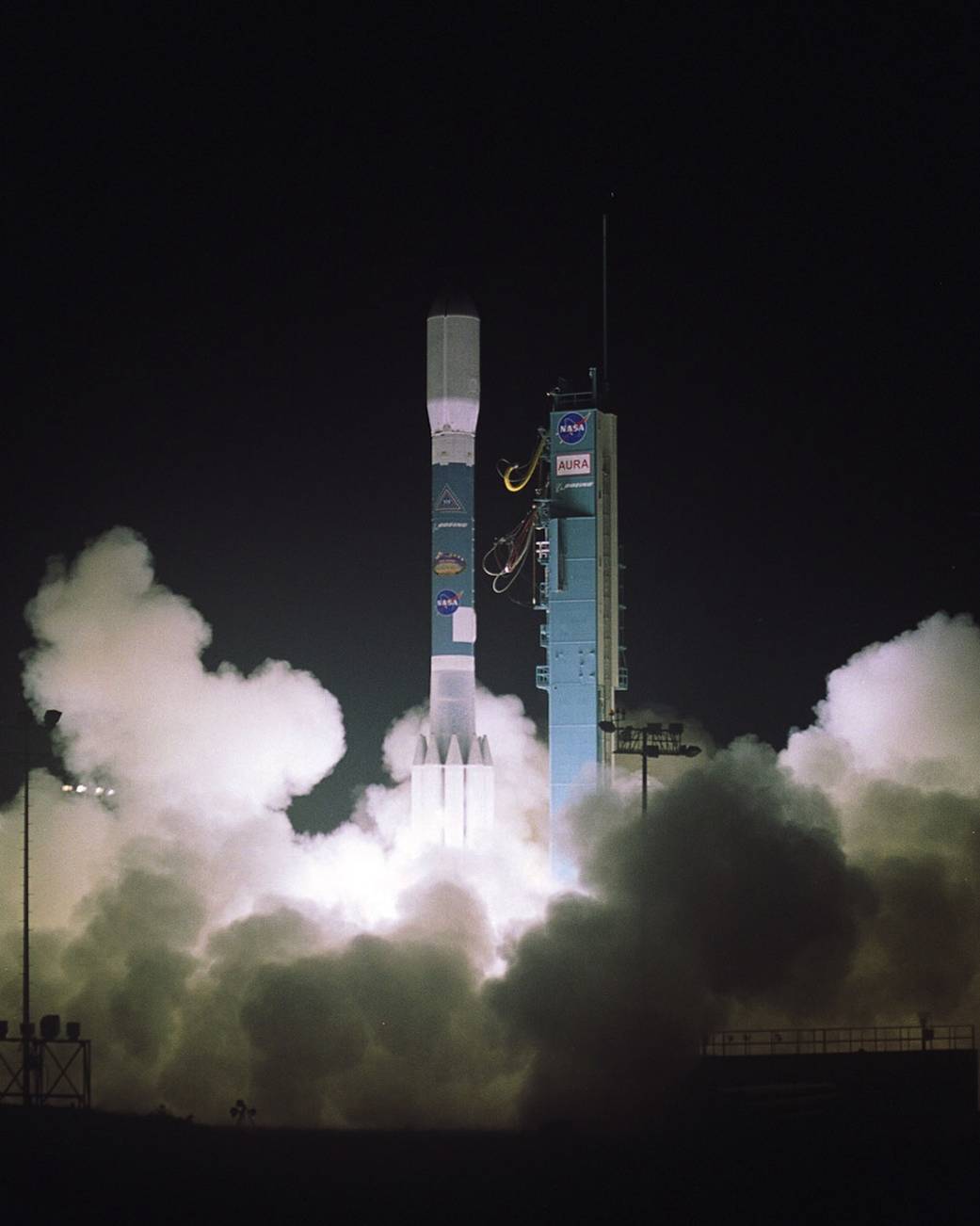The Aura spacecraft, atop the Boeing Delta II rocket, successfully launched from Vandenberg Air Force Base (VAFB) in California on July 15, 2004.
Aura, NASA’s latest Earth-observing satellite, will help us understand and protect the air we breathe. Aura will help answer three key scientific questions: Is the Earth’s protective ozone layer recovering? What are the processes controlling air quality? How is the Earth’s climate changing? NASA expects early scientific data from Aura within 30-90 days.
Aura also will help scientists understand how the composition of the atmosphere affects and responds to Earth’s changing climate. The results from this mission will help scientists better understand the processes that connect local and global air quality.
Each of Aura’s four instruments is designed to survey different aspects of Earth’s atmosphere. Aura will survey the atmosphere from the troposphere, where mankind lives, through the stratosphere, where the ozone layer resides and protects life on Earth.
The Aura spacecraft provides the essential services for operating the four scientific instruments over the life of the mission. The spacecraft, based on the Earth Observing System Common Spacecraft design, was built by Northrop Gurmman Space Technology and adapted for the Aura instrument payload.Image credit: Boeing/Thom Baur
1 min read


























